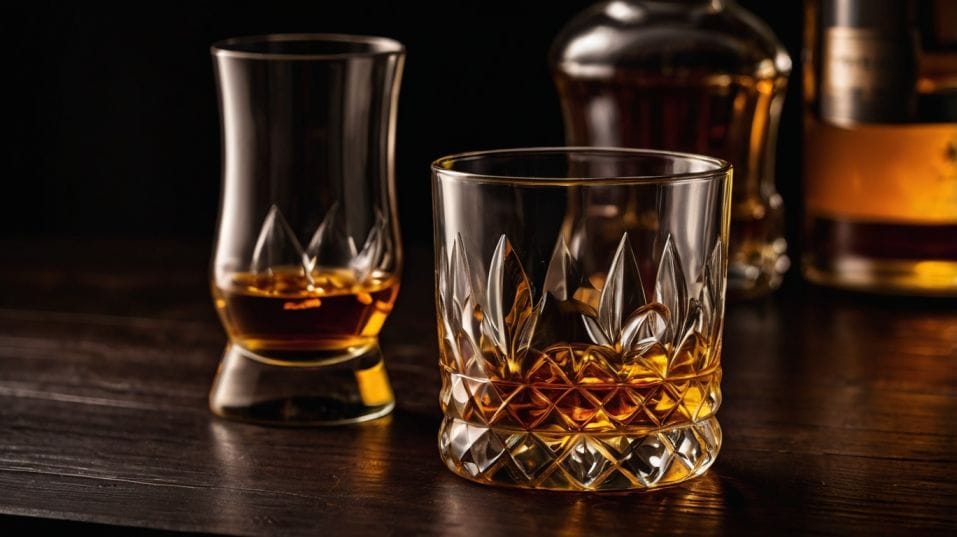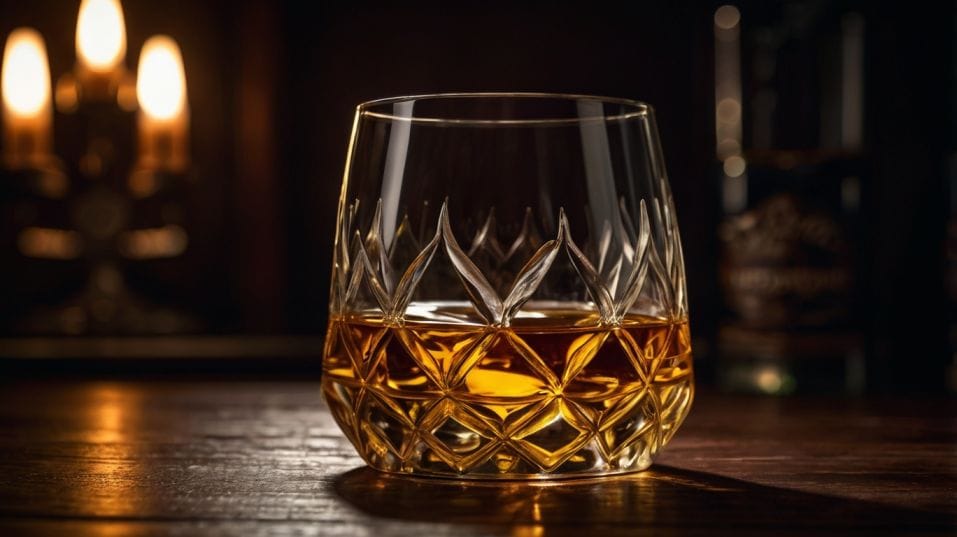Neat vs. On the Rocks: What’s the Difference?
Neat or on the rocks? Learn how each pour changes whiskey’s flavor, feel, and finish—so you can drink smarter, with confidence.

Ever wonder why the same whiskey can taste bold one night and mellow the next? It’s not the bottle—it’s the pour.
Whether you drink neat or on the rocks shapes the entire experience: flavor, feel, even how long it lingers. But this choice isn’t just about ice—it’s about control.
If you’re just starting your whiskey journey, understanding this one decision can sharpen your palate and set the tone for every pour that follows.
What It Means to Drink Whiskey Neat
When you order or pour whiskey “neat,” you’re getting it straight from the bottle. No ice, no water, no chilling, no mixing. It’s typically served in a tulip-shaped glass (for a reason) and held at room temperature.
This is whiskey in its rawest, most revealing state. It’s how distillers test their own creations, and it’s how collectors often assess a bottle’s true quality.
Neat doesn’t mean untouched or sacred—it just means unaltered. And for you, that means full access to the whiskey’s structure.
The alcohol content (usually 40–65% ABV) isn’t being tamed. So every part of the experience is sharper. You get the honest heat of the ethanol, the full spectrum of aroma, and the undiluted textures—viscous, oily, tannic, or dry.

Why Drink Neat?
Because you want to learn something. Drinking neat trains your palate. It makes you more sensitive to flavors, mouthfeel, and finish.
You start noticing when a bourbon leans too heavy on vanilla, or when a single malt’s peat masks weak mid-notes. It forces focus.
It’s also the cleanest way to compare bottles. If you’re building a collection or starting to taste flights seriously, neat is your baseline.
You’re not just sipping; you’re analyzing. And neat gives you the full blueprint of what the whiskey has to offer—good or bad.
But Here’s the Truth
Neat doesn’t mean better. It means unforgiving. That $90 bottle with a high-rye mash bill and 114 proof?
It might blow out your palate if you're not used to that kind of intensity. Some whiskeys need a little softening before they show you their depth.
On the Rocks: More Than Just Ice
Whiskey “on the rocks” means served over ice. Classic, common, often misunderstood. It’s seen as the “easy” option, but the effects it has on whiskey are anything but simple.
When you add ice, two things happen immediately: the temperature drops and the whiskey starts to dilute. Both of these alter flavor, aroma, and texture—sometimes dramatically.
Lower Temperature
Cold dulls certain aromatic compounds and slows down volatility. You lose some sharpness in the nose, especially the more aggressive alcohol vapors. That’s why whiskey on the rocks often smells softer, even before the ice melts.
But temperature also affects taste. Cooler whiskey can mute some flavors (especially delicate floral or fruity notes), but it can also make caramel, vanilla, and oak more approachable.
The heavier molecules stick around while the lighter, more volatile notes back off. That’s not a bad thing—it just shifts the focus.
Dilution
As the ice melts, water integrates into the whiskey. This doesn’t just make it “weaker”—it opens it up. A few drops of water can unlock esters and break apart certain molecular bonds, releasing hidden flavors and smoothing rough edges.
This is why many master distillers test whiskey with a dropper of water before bottling. It’s a tool, not a compromise.
But here’s the catch: dilution isn’t precise when you’re drinking on the rocks. It happens over time. That means the flavor of your whiskey evolves from the first sip to the last.
Early on, it’s still strong. Ten minutes later, it’s a different drink. If you’re paying attention, you can learn a lot just by tasting along the way.
Flavor Impact: Neat vs. On the Rocks
Let’s get specific. What does each method actually do to the flavor?
Drinking Neat
- Aroma: More vivid, volatile, layered. Sometimes overwhelming if you’re not used to higher proof.
- Flavor: Concentrated. Clear view of the whiskey’s balance, but also its flaws.
- Finish: Usually longer and hotter. You feel the ethanol more on the back end.
- Texture: Full body, uncut viscosity, more grip.
Drinking On the Rocks
- Aroma: Softer, muted highs. Less intensity on the nose, which can help reveal deeper base notes.
- Flavor: Smoother, more mellow. Easier to isolate sweeter or oaky tones. Less nuance unless you track the pour over time.
- Finish: Shorter, cleaner. The ethanol doesn’t linger as long.
- Texture: Thinner as the ice melts. Initially crisp, later watery if left too long.
The key isn’t to pick a side. It’s to recognize what’s happening and use it to your advantage. If you’re opening a smoky, cask-strength Scotch that punches like a campfire, maybe the first sip is neat, but the second has a splash of water.
If you’re relaxing with a standard 90-proof bourbon, a cube might bring it to life without killing it.
How Professionals Use Both
Even seasoned collectors and master blenders don’t stay loyal to one method. Instead, they taste strategically.
A common expert move? Start neat, then slowly add water or ice until the whiskey hits its ideal range. That lets you catch all the transitions: how it begins, how it evolves, where it breaks down. You’re not guessing. You’re tuning.
In controlled tastings, professionals often use droppers instead of ice. Why? Because ice is unpredictable. The size, shape, and temperature all affect how fast it melts—and how it impacts flavor.
But in everyday drinking, ice has its place. It keeps your pour cool, stretches out the session, and gives the whiskey space to breathe in a way that’s approachable and forgiving.
The point is: learn both methods. Know when to be precise, and when to let the drink breathe on its own. Master both, and you’re not just drinking whiskey—you’re shaping it.
Final Thoughts: Choose With Purpose
Neat reveals. On the rocks evolves. Each way of drinking whiskey opens different doors—and each helps you build your palate, collection, and confidence.
Start neat to sharpen your senses. Go on the rocks when you want to relax, linger, or watch a whiskey open up slowly. Pay attention to how the whiskey changes, and what that tells you about its character.
No method is elite. What matters is intention. The more you experiment, the better you get at spotting quality, identifying style, and building a whiskey routine that’s personal and sharp.
So here’s your move: Pour your next whiskey two ways—one neat, one on the rocks. Taste them side by side. Track what changes.
Build your instincts. That’s how you go from curious to confident. That’s how you drink like someone who knows.




